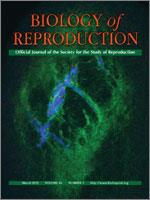Anti-Mullerian hormone (AMH) is involved in the regression of the Mullerian ducts in mammalian and avian male embryos as well as the right oviduct in avian female embryos. AMH is expressed by granulosa cells of adult hens and mammals and is thought to be involved in the recruitment of follicles from the primordial pool as well as in regulating follicle-stimulating hormone (FSH) sensitivity. We have shown that AMH expression by the granulosa layer of hens is high in the small follicles but decreased in the larger hierarchical follicles. The decline in expression of AMH with increasing follicle size is associated with an increase in expression of the receptor for FSH (FSHR) in the granulosa layer, although the mechanism is not known. In this study, we tested whether vitamin D (1,25-dihydroxyvitamin D3) regulates expression of AMH mRNA in granulosa cells of the hen. Granulosa cell layers were removed from follicles 3–5 mm and 6–8 mm in size, dispersed, and cultured for 24 h in Medium 199 5% fetal bovine serum (n = 7). The medium was removed and replaced with Medium 199 0.1% bovine serum albumin and vitamin D (at doses of 0, 10, and 100 nM) and cultured for 24 h. Cells were harvested and RNA was extracted for use in quantitative PCR. Parallel 96-well plates were set up to examine cell proliferation. AMH and FSHR mRNA expressions were evaluated, and all values were standardized to 18S reactions. There was a significant (P < 0.05) dose-related decrease in the expression of AMH mRNA in granulosa cells of 3- to 5-mm and 6- to 8-mm follicles in response to vitamin D. Additionally, FSHR mRNA and cell proliferation were significantly (P < 0.05) increased by vitamin D in both groups. Western blot analysis for the vitamin D receptor (VDR) showed doublet bands at the expected sizes (58 and 60 kDa) in protein isolated from the chicken granulosa layer. Immunohistochemistry was used to identify VDR within the follicle, and it predominantly localized to the nucleus of granulosa cells. VDR mRNA expression in the granulosa layer, relative to follicle development, was increased (n = 4; P < 0.05) with follicle development, with greatest expression in the F1 follicle. There was no evidence for expression (mRNA or protein) of the calcium-binding protein, calbindin (CALB1), in the ovary or granulosa layer. Overall, these results suggest that vitamin D regulates AMH expression, and thereby may influence follicle selection in the hen.
How to translate text using browser tools
14 December 2011
Vitamin D Regulates Anti-Mullerian Hormone Expression in Granulosa Cells of the Hen
Jessye Wojtusik,
Patricia A. Johnson
ACCESS THE FULL ARTICLE

Biology of Reproduction
Vol. 86 • No. 3
March 2012
Vol. 86 • No. 3
March 2012
anti-mullerian hormone
FSH receptor
granulosa
hen
vitamin D




